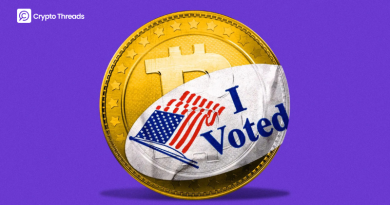Custodial vs Non-Custodial Wallets: Which One is Right for You?

In 2025, as crypto adoption reaches new highs, one question stands out: How do you store your crypto safely? Whether you’re buying Bitcoin for the first time or exploring advanced DeFi strategies, your choice of wallet matters a lot.
One of the first decisions you’ll need to make is: custodial or non-custodial? This isn’t technical; it defines who controls your private keys, how secure your funds are, and how much freedom you actually have. Along the way, we’ll share data, real-world examples, and practical tips to help you decide which type of wallet is best for your goals in 2025 and beyond.
What Are Crypto Wallets?
A crypto wallet is where you access and manage your cryptocurrencies, such as Bitcoin, Ethereum, or NFTs. However, crypto wallets don’t physically store your assets. Instead, they generate unique addresses on the blockchain that point to your digital assets
With a traditional wallet, you carry physical money. With a bank app, your money sits in an account managed by the bank. You don’t really control the cash directly; the bank does. You give instructions, and the bank acts on your behalf.
On the other hand, a crypto wallet doesn’t hold money in the usual sense. It holds the private keys that prove you own your assets on the blockchain. Your cryptocurrencies, tokens, and NFTs aren’t inside the wallet itself; they’re recorded on a global ledger (the blockchain), and your wallet simply lets you access and control them.
The actual cryptocurrencies aren’t stored in your wallet. They remain on the blockchain at all times. What the wallet holds is your private key, which proves ownership and allows you to authorize transactions securely. In other words, it acts as your personal access point to your crypto holdings. Most wallets also generate a seed phrase — a set of 12 to 24 words that act as a human-readable backup of your private key. This phrase is crucial for restoring access if your device is lost or your app is deleted.
Because the private key is the only way to unlock your funds, keeping it secure is critical. If it’s ever lost or compromised, and you haven’t backed up your seed phrase, there’s no way to recover your assets.
How Crypto Wallets Work
As mentioned, your crypto wallet doesn’t hold coins; it holds the keys that prove ownership. At a technical level, this system relies on public-key cryptography.
When you send crypto, your wallet uses your private key to digitally sign the transaction. This signature confirms that the transaction was authorized by you and hasn’t been altered. On the receiving end, when someone sends crypto to your wallet, it’s recorded on the blockchain at your public key address, making the transfer transparent, secure, and verifiable.
Let’s break this process down into steps to better understand the flow:
- When you activate a wallet, it generates a private key and a corresponding public key.
- The public key becomes your wallet address; others use it to send you crypto.
- The private key is used to sign outgoing transactions, proving ownership.
- The blockchain verifies the signature and processes the transaction.
- Your wallet shows your balance by reading the blockchain, not by “holding” any coins.
If your private key is compromised, your funds can be stolen without recourse. That’s why security and key management are the core concerns of wallet design.
Custodial vs Non-Custodial Wallets: The Core Distinction
The most important decision you’ll make when choosing a crypto wallet is whether you want a custodial or non-custodial setup. This comes down to one critical question: Who controls the private keys: you or a third party? Let’s examine each option in detail so you can make a confident and informed choice.
What Is a Custodial Wallet?
A custodial wallet is managed by a third-party service, typically a crypto exchange or financial app. They hold your private keys, manage the security, and handle all the technical parts behind the scenes. It works similarly to how a bank manages your regular money: you log in, make transactions, and the service handles everything else.
This kind of wallet is popular with beginners because it’s easy to use. If you forget your password or lose access, the provider can usually help you recover your account. However, you’re trusting that company to keep your crypto safe, and in some cases, platforms have been hacked or gone bankrupt, leaving users without access to their funds.
Here’s how custodial wallets stack up:
- Managed by services like Binance, Coinbase, or Crypto
- You log in with a password—no need to manage private keys
- Recovery is simple with email or identity verification
- Often comes with built-in trading, staking, and customer support
- Some platforms provide insurance against certain types of losses
Still, you never truly own your crypto in a custodial setup. If the platform freezes withdrawals, suffers a hack, or goes bankrupt, you can lose access to your funds. That’s exactly what happened in November 2022, when the significant exchange FTX collapsed and filed for bankruptcy, preventing many users from withdrawing their assets.
What Is a Non-Custodial Wallet?
A non-custodial wallet gives you complete control over your funds. You generate and store your own private keys, meaning you alone have access. There’s no customer support to recover your wallet, and no central authority that can restrict your transactions.
This setup offers maximum freedom and privacy, but it comes with added responsibility. If you misplace your seed phrase or lose your device without a backup, your funds are permanently lost.
Let’s explore the key characteristics of non-custodial wallets:
- Full control over your private keys and funds
- No reliance on centralized servers or companies
- Ideal for interacting with DeFi, NFTs, and decentralized applications
- No KYC or identity verification
- Requires users to manage backups and security manually
This type of wallet is best suited for users who are comfortable managing their own security. It’s ideal for people who plan to hold crypto long term, regularly interact with DeFi protocols or NFT marketplaces, or simply want full control over their digital assets without relying on any third party. Non-custodial wallets are also a popular choice for those who believe in the core principles of crypto—decentralization, privacy, and financial independence.
Custodial vs Non-Custodial Wallets: A Side-by-Side Comparison
Before choosing, it’s important to see how these two wallet types differ across practical dimensions. The following table compares their core attributes based on real user concerns—control, security, recovery, and ease of use.
Feature | Custodial Wallet | Non-Custodial Wallet |
Key Ownership | Held by a third party | Held by user |
Recovery Options | Yes (via support) | No (seed phrase only) |
Ease of Use | Very user-friendly | Requires technical understanding |
Privacy | Often requires KYC | Usually anonymous |
Security Risks | Centralized hack risk | Risk of human error |
Best For | Beginners, frequent traders | Advanced users, long-term holders |
A 2024 report by Chainalysis found that most funds entering personal (non-custodial) wallets come from centralized exchanges. This suggests many users start with custodial platforms and later shift to self-custody. The same report notes that less than 1% of these transfers involve illicit sources, showing that most users are simply seeking more control.
Events like the FTX collapse in late 2022 and the rise of DeFi have accelerated this move. While behavior varies across regions, the overall trend is clear: users begin with custodial wallets for convenience, but eventually turn to non-custodial options for security, privacy, and full ownership.
Wallet Formats: Hot vs Cold Storage
Aside from control, you should also consider how and where your wallet is stored. Crypto wallets fall into two categories based on internet connectivity: hot wallets (online) and cold wallets (offline). Each format serves a different purpose depending on your risk profile and usage habits.
Here’s a breakdown:
Feature | Hot Wallets | Cold Wallets |
Connectivity | Connected to the internet | Kept offline (hardware or paper wallets) |
Best Use Case | Quick access and frequent transactions | Long-term holding and high-value storage |
Formats Available | Mobile apps, desktop software, browser extensions | Hardware devices, physical backups |
Security Risk | More vulnerable to phishing or malware attacks | Immune to online hacks |
Convenience | Highly convenient for daily use | Less convenient for everyday transactions |
Examples | MetaMask, Trust Wallet, Phantom, Rainbow | Ledger Nano X, Trezor Model T, Keystone |
Institutional investors and serious holders typically use cold wallets for 90% of their crypto and hot wallets for small, frequent transactions. Think of it like the difference between a checking and savings account. Cold wallets are designed for security and long-term storage, where assets remain untouched for months or even years.
Meanwhile, hot wallets offer the speed and flexibility needed for quick trades, DeFi interactions, or sending small amounts on the go. This dual-wallet strategy balances convenience with robust protection.
How to Keep Your Wallet Secure
Regardless of which type of wallet you use, personal security practices are critical. Most crypto losses happen due to human error, not technology.
Here are the key principles to follow:
- Store your seed phrase in multiple physical locations (never online)
- Use 2FA for custodial wallets and enable biometric locks for hot wallets
- Double-check wallet download sources to avoid fake apps or phishing sites
- Never share your private key or seed phrase with anyone
- Use a hardware wallet if you’re storing more than a few thousand dollars’ worth of crypto
In 2024, nearly $2.2 billion in cryptocurrency was stolen due to wallet, bridge, and platform exploits. In the first half of 2025, hackers stole over $2.17 billion, putting this year on pace to surpass the total losses of 2024. The single largest theft occurred in February 2025, when North Korean-linked hackers stole around $1.5 billion from the Bybit exchange.
These figures underscore a single truth: proper wallet security isn’t negotiable. Most breach incidents involve poor key management or unsecured wallet setups—issues that are preventable with best practices such as seed phrase backups, hardware storage, and avoiding suspicious links or downloads.
Choosing the Right Wallet Based on Use Case
The best wallet for you depends on how you plan to use your crypto. Different use cases call for different tools. Remember, there’s no perfect wallet, just the right one for your goals and risk tolerance.
Below is a quick breakdown of wallet types matched to common user scenarios:
Use Case | Recommended Wallet Type |
Beginner buying crypto | Custodial (Coinbase, Binance) |
Long-term storage | Non-custodial cold (Ledger, Trezor) |
Trading actively | Custodial hot (Kraken, OKX) |
Using DeFi & dApps | Non-custodial hot (MetaMask) |
NFT collection | Non-custodial hot (Rainbow, Trust) |
Staking & yield farming | Custodial (Binance) or non-custodial (Keplr, Phantom) |
FAQs About Crypto Wallets
What happens if I lose my private key?
⇒ In a non-custodial wallet, your funds are unrecoverable unless you’ve saved your seed phrase. In a custodial wallet, the provider may help recover access.
Can I use both wallet types?
⇒ Yes. Many users trade on custodial exchanges and transfer funds to a cold wallet for storage.
Is MetaMask a custodial wallet?
⇒ No. MetaMask is a non-custodial wallet, and you’re responsible for your keys.
Are hardware wallets worth it?
⇒ Yes, especially if you’re storing large amounts of crypto. They offer maximum protection against online threats.
Conclusion: Choosing What Fits You
Your crypto wallet isn’t just a tool; it’s where trust, control, and security meet. Whether you go custodial or non-custodial, the right choice comes down to how hands-on you want to be with your assets.
If you’re just getting started or prefer convenience with built-in recovery, custodial wallets offer a safer learning curve. But if you’re comfortable taking ownership and understand the risks, non-custodial wallets give you unmatched freedom, along with the full weight of responsibility.
From experience, many users start with custodial platforms, then shift to self-custody as they learn the ropes. That gradual path works, and it’s okay to take it. The key is knowing where you are in your journey and what matters most to you: simplicity or sovereignty.



